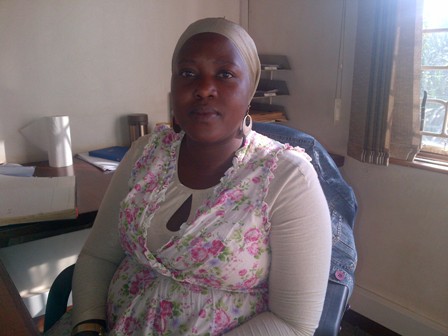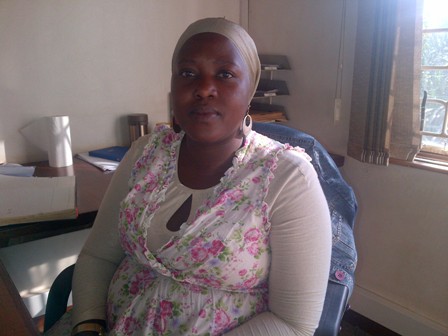-
CreatorTopic
-
12/03/2014 at 11:15 pm #2482
 ErikanMember
ErikanMemberAfter reviewing the module content for Lesson 10, take some time to reflect back on what you learned and answer the following questions:
1) The PrEP example in Module 10 highlighted how product introduction and scale-up can differ according to factors such as the country’s health systems, regulatory approval processes, and the availability of financial, human and other resources. Reflect on your setting and think about the potential process for introduction and possible scale-up of an efficacious microbicide (e.g., tenofovir gel or dapivarine ring). Describe what might be similar or different to the PrEP timeline.
2) Describe ways you have engaged stakeholders (or been engaged as a stakeholder) in results dissemination for a trial and/or possible future access of a trial product. What were some of the challenges? Are there lessons learned you might share?
-
CreatorTopic
-
AuthorReplies
-
-
01/17/2015 at 3:34 am #2693
Siriporn
MemberI agreed with Mathias Wambuzi that CABs are engaged in drawing a dissemination plan, preparing key messages and their translation into local languages. And also all stakeholders should involve. And also greed that challenges are how to correct people’s misinformed notions without discrediting the sources where people heard this misinformation.
-
01/17/2015 at 3:21 am #2692
Siriporn
Member1) The PrEP example in Module 10 highlighted how product introduction and scale-up can differ according to factors such as the country’s health systems, regulatory approval processes, and the availability of financial, human and other resources. Reflect on your setting and think about the potential process for introduction and possible scale-up of an efficacious microbicide (e.g., tenofovir gel or dapivarine ring). Describe what might be similar or different to the PrEP timeline
Refer to The World Health Organisation in 2012, published guidance on the use of PrEP for serodiscordant couples, and men and transgender women who have sex with men. Specifically the HIV-negative partner of a serodiscordant. .
It has been argued that pre-exposure prophylaxis could have an enormous impact on the worldwide HIV epidemic. Mathematical models estimate that if tenofovir PrEP was used by 90 percent of high-risk people and was effective 90 percent of the time, potentially the spread of HIV infection could be reduced by more than 80 percent in a few years. However in THAILAND, If anyone interest to use PrEP, they need to pay by themselves. In the Future, hope policy could be prevented HIV infection by using PrEP and preventing high-risk behaviours among the most sexually active population groups.
2) Describe ways you have engaged stakeholders (or been engaged as a stakeholder) in results dissemination for a trial and/or possible future access of a trial product. What were some of the challenges? Are there lessons learned you might share?
I never involved in PrEP trial but I think it is importance to sharing large trial results, in language that all stakeholders can understand, regardless of their background in science and, specifically, the science behind the trial product. -
01/16/2015 at 6:32 pm #2689
 John MdluliMember
John MdluliMemberAnother way in which stakeholders can be engaged is through the establishment of sustainable relationships with the media house such as print and radio media. This will help to prevent negative reporting by the media or ensure that the site has full control on media reporting
-
01/16/2015 at 6:29 pm #2688
 John MdluliMember
John MdluliMember1) The PrEP example in Module 10 highlighted how product introduction and scale-up can differ according to factors such as the country’s health systems, regulatory approval processes, and the availability of financial, human and other resources. Reflect on your setting and think about the potential process for introduction and possible scale-up of an efficacious microbicide (e.g., tenofovir gel or dapivarine ring). Describe what might be similar or different to the PrEP timeline.
The starting point will be to conduct Community Dialogues and Focus Group Discussions (FGD) with groups of Community Stakeholders, Broader Stakeholders, District, Provincial and National Stakeholders. The objective will be to assess stakeholder’s reaction to various results scenarios. The following three results scenarios; Positive, Flat or Negative results and people should be asked on how they will react to these various scenarios. The communication plan aimed at addressing concerns identified during the assessment exercise should be developed. Such plan should aim to develop targeted messages that aim to address real issues
2) Describe ways you have engaged stakeholders (or been engaged as a stakeholder) in results dissemination for a trial and/or possible future access of a trial product. What were some of the challenges? Are there lessons learned you might share:
Consultation meetings with CAG and other stakeholders through out various phases of a trial. Possible challenges include a situation in which their are no enough resources to sustain product access in a community. Other challenges include lack of stakeholder support to a new product. Lessons learned is that stakeholder consultation should be an on-going process that should happen through out various phases of a trial in which potential trial threats are identified and addressed
-
01/15/2015 at 4:57 am #2677
Mathias Wambuzi
MemberI absolutely join the team contributions on challenges of trial dissemination and applaud members for sharing this. However,allow me add that it is another challenge to interpret statistical data in a language that communities can understand. Communities may also fail to attach relevance of the trial to their community specific health needs. To what extent is the trial whose results you are giving addressing the specific immediate needs?
Sustainability plan:
Note that the life of a trial comes with unique benefits to the community like HIV testing, treatment,referrals etc. These ultimately end with the life of trial. This has always been a challenge during dissemination where stakeholders ask for continuation of services.
Congratulations to the team!
-
01/14/2015 at 5:53 am #2671
Mathias Wambuzi
MemberConsidering the global demand for new preventive tools for HIV/AIDS,every one would be more excited to be part of the very first to gain access regardless. Even myself would be part of the queue despite non participation in trial. My country Uganda would also be more willing to introduce and scale up of this product.
Validating this product would mean introducing the product to the gallant trial participants and local community stakeholders as a priority for their noble involvement in the entire process.
But even before introduction, the Ministry of Health would plan roll out through the national health system with special consideration to the high risk populations who are key drivers of the epidemic. This would be an opportunity cost considering the financial resource envelope of our country.
During results dissemination, stakeholders are engaged differently at varying levels to ensure goals and objectives at this level in the process are achieved. CABs are engaged in drawing a dissemination plan, preparing key messages and their translation into local languages, sports events as a community mobilization tool, question and answer sessions, research team interprets results.
-
12/24/2014 at 1:50 pm #2599
Agnes Nondo
MemberJaura and Laura thank you for your great contributions I agree with you both, the results must be disemminated in the language that the participant understands and it is important that the study comes up with key messages which are translated and adhered to accordingly so that the same information is given in any prefered languages to all stakeholders.
In the same maner that we give study informtion to the stakeholders, for us from the developing worle setting we translate all docuemns that we share with participants and stakeholders including brochures so that they also read in their own lanmguage that way they develop confidence that the study is not hiding anything that it is transparent ans so they compare what information they have in Engilsh and in the local language.
-
12/16/2014 at 1:09 am #2562
 Laura PotterMember
Laura PotterMemberI agree that the trial results dissemination needs to happen in language that all stakeholders can understand, regardless of their background in science and, specifically, the science behind the trial product. Thanks for advocating for that, Jauhara! But I also believe that it is critical that, in the effort to describe the results in language people can understand, there is no important information left out. That would be my only concern, but of course it is very important that people can make sense of the results that are shared with them. I think overall, communications should be simple, but thorough. 🙂
-
12/15/2014 at 8:07 am #2559
 Jauhara NanyondoMember
Jauhara NanyondoMemberI agree with Rona, it is important to have systems to check the consistence of the message or communication to stakeholders, accuracy of the message and the timing of delivering of the message. These are very key to stakeholders in information sharing process.
Laura you highlighted very interesting challenges during the dissemination process on the side of the stakeholders, however what I have to advise is to have the scientist share simplified results so that the common person in the community is able to grasp the information for impact.
-
12/15/2014 at 7:51 am #2558
 Jauhara NanyondoMember
Jauhara NanyondoMemberThe broader efficacy trials inform of demonstration projects are usually requested by regulators before licencing the project. Our community would really want to take up the scale up but most likely will be affected by the limited resources that are allocated for the health sector. Our budget costing is very poor that most of the health services in the country are supported by development partners.Therefore this might require a lot of re- organisation inform of allocation of resources both financial and human to facilitate the move to to scaling up of the process.There is need to build a strong base for product acceptability.This will require engagement efforts to create a base of supporters and advocates for eventual uptake of the product.
At this level the policy makers are very important in this stage so that they influence the policy process towards implementation of the new product.
We have shared results with stakeholders before, it is a good experience and every time it is done you learn a how to do it better the next time you have the opportunity. However it is important to note that a site needs to have a dissemination plan to facilitate its stakeholder engagements. When the results are ready it is a primary responsibility of the Principal Investigator to inform the key stakeholders about the results of the completed research.
Arrangements are done, to include the information that is planed to be shared by the stakeholders and this information is reviewed before it is shared to the public.All stakeholders who were engaged at the start of the study should be engaged at this stage of results dissemination. Appropriate messages are developed, approved and eventually shared with the different audiences.It is critical that information is first shared with the study participants so they don’t get to hear about it from other sources other than he research team.
During the dissemination a team should be identified to handle the communication and should be lead by the PI.This helps to avoid giving uncoordinated information to stakeholders.
Our site has not been involved in sharing large trial results, but with the experience drawn from the phase one / two trials we can ably share the large trial results.
-
12/15/2014 at 7:06 am #2557
 PongpunMember
PongpunMember1) The PrEP example in Module 10 highlighted how product introduction and scale-up can differ according to factors such as the country’s health systems, regulatory approval processes, and the availability of financial, human and other resources. Reflect on your setting and think about the potential process for introduction and possible scale-up of an efficacious microbicide (e.g., tenofovir gel or dapivarine ring). Describe what might be similar or different to the PrEP timeline
For my experience of iPrEx and MTN study, PrEP in Thailand not well known in general population. I think only people who work in this area that understanding about PrEP, especially in MSM/TG. If anyone interest to use PrEP, they need to pay by themselves. However, government have interested about PrEP. Hope they have policy to support PrEP soon.
2) Describe ways you have engaged stakeholders (or been engaged as a stakeholder) in results dissemination for a trial and/or possible future access of a trial product. What were some of the challenges? Are there lessons learned you might share?
We had been dissemination iPrEx result to all stakeholders. No problem for us to provide information. iPrEx team have great preparation plan and share to each site. We have communication plan for this step. We set time point to share result in step by step and set target for releasing news. I think that only media that difficult. We prepare news release to media but in real situation we found that many website copy and developing some content that error and miss some information. This is good experience for our team about awareness to providing information to media.
-
12/12/2014 at 10:26 pm #2550
 Laura PotterMember
Laura PotterMemberI think our setting would be very conducive to the introduction and scale-up of an efficacious microbicidal prevention product, especially if this product had the potential to be turned into an MPT, or multipurpose prevention technology, like a combination birth control + HIV prevention gel or ring. The financial, human, and other resources are all here in San Francisco, and so is the precedent for HIV prevention as a cause worthy of financial and other resource investment. I agree with Rona that the demonstration projects that were seen for PrEP would certainly need to be repeated for any additional microbicide products that are being rolled out, and I think the power of combination technologies would really make waves, not to mention reduce stigma and pushback associated with PrEP-like HIV prevention tools that has been seen with Truvada so far, since birth control is a relatively more acceptable form of prevention technology.
I have not personally been involved in results dissemination for a trial, although I have explained past trial results to potential study participants over the phone or while networking or recruiting at outreach events. This is always an exciting moment for education and interesting conversations about people’s perceptions of research, science, and HIV prevention as portrayed in the media, religious organizations, or their friends and families, vs. what the science and research suggests. Even better is when one of these conversations ends with someone saying, “Wow, I can’t believe PrEP exists. I am definitely going to tell my friends about it!” because I know that our conversation has not only had an impact on this one individual, but that the information is going to seep into other communities of which that individual is a part and which Bridge HIV has not yet reached.
Challenges are how to correct people’s misinformed notions without discrediting the sources where people heard this misinformation. Also, being wary of assuming that someone has a base knowledge of science, research, HIV prevention, or whatever we are talking about, since lots of people actually may not have this assumed background and foundation from which to build the rest of our conversation. This certainly applies to trial results dissemination, since oftentimes laypeople have difficulty understanding scientific language or ideas. At the same time, the media’s often oversimplified messages can reduce or exaggerate the scientific results of a study, which is then downplayed or oversensationalized, to the detriment of the actual scientific impact of those results. The answer is, certainly, to meet people where they’re at with the correct, accurate information in terms and language that they can easily understand. And I feel that this would be best delivered in multiple, overlapping formats – written published articles, advertisements on public transportation or billboards perhaps, live presentations, social media, local news TV channel interviews with a representative of the study, digital media like podcasts and videos on YouTube and other popular platforms online, etc. – so that the information can really sink in.
-
12/12/2014 at 2:18 pm #2547
 AnneMember
AnneMemberThese are great comments!
I agree Agnes, involvement and roles of stakeholders should be considered and discussed as early as possible– and as Rona suggested, when things do go according to plan, giving opportunity to advocates and other key players and decision makers can help dispel rumors and disseminate accurate information. Returning to your initial communications plan can also help to maximize engagement opportunities associated with closure and dissemination of results and establish satisfying relationships!
-
12/11/2014 at 2:57 pm #2544
Agnes Nondo
MemberOur site has not been involved in PrEP, however thinking of what might be similar or different to the introduction and possible scale up of the efficacius microbicide is mainly lack of political will. It is one important factor that could affect the introduction and roll out of the efficacius microbicide. Zambia is a young democratic country with a lot of several political parties in the policy making insitution, which results in anachy in policy delivery. While the health system is conducive with adequate manpower, the Ministry can not do much even of the regulatory authourites granted approval timely.
I was involved in a trial where we disemminated results to all stake holders. It has been the most joyous period of my life as a research personnel. I came to appreciate the importance of stakeholder engagement in the disemination of research results. Lesson learned was that every stakeholder at all levels must be involved and their expected role and contribution to be considered.
-
12/11/2014 at 4:23 am #2539
Patchara
MemberI never involved in PrEP trial. I involved only vaccine trial (RV144) but worked only monitoring. However I think it is importance to inform and ask their opinion about dissemination and access trial product.
Dissemination process is important for all kind of trial. It can be affected for community such as their image and benefit. Researcher should concern about this. -
12/09/2014 at 8:09 pm #2530
 RonaMember
RonaMemberI think it is likely that additional implementation studies and demonstration projects would play an important role in the scale-up of an effective microbicide or ring. For scale-up to be successful there would need to be information about real world use and a strong foundation of awareness and understanding among those who would need it most. As we have seen with PrEP, issues of stigma and discrimination would need to be addressed through ongoing educational efforts so that they are acceptable and widely adapted for use.
While I’m not involved in working with stakeholders at a specific trial site or even within a network, at the Division of AIDS level we do reach out to stakeholders when a trial is ending to help ensure that messages are consistent, accurate, and timely. We’ve done this with varying degrees of success for different studies. Though we try to be well prepared with our plans in place, there are definitely times we are caught off guard, for example for unexpected trial termination as a result of a DSMB recommendation. In general we have a list of relevant stakeholders for each study that we review and we develop a tiered communication approach and a timeframe within which we communicate results and messages. The same information is shared within a given network and with the sites, so that they in turn can communicate with their stakeholders and through their channels of communication.
With regard to future access of a trial product, I know there access plans are put in place prior to trial initiation and they are developed with key stakeholders (e.g., in country regulatory bodies, ministries of health etc.). One challenge is that issues of access beyond a certain point in time post-trial may be left to the responsibility of the site, working with their institution, Ministries of Health, the specific industry partner and perhaps other donors. As a result, longer term access goes beyond the agreements made when developing/conducting the trial and are not necessarily in our control.
-
-
AuthorReplies
- The forum ‘GPP Discussion Forum’ is closed to new topics and replies.


